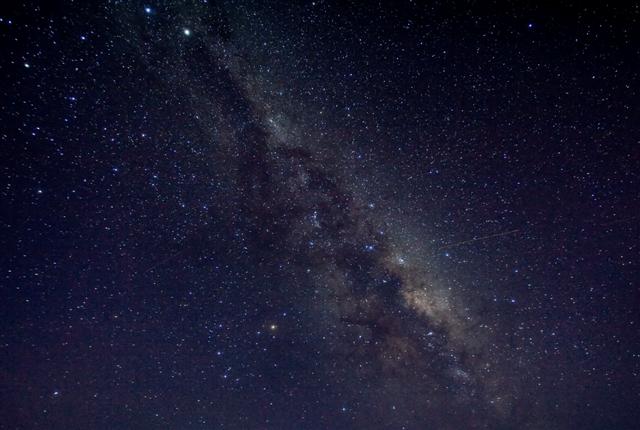Page 2/3 - Posted October 2, 2009
The ultimate Copernican revolutionAbout 10 years ago, that revolution got, well, more ultimate (think of Spinal Tap’s 11 on the volume dial). Two rival teams of astronomers had spent much of the 1990s observing exploding stars, called supernovae, at distances up to halfway across the visible universe. The universe is expanding, and matter (dark or otherwise) attracts other matter through gravity, so they set out to measure how much this mutual attraction is slowing down the expansion. In early 1998, however, the two teams independently reached the same conclusion: The expansion isn’t slowing down at all but seems to be speeding up. The universe appears to be accelerating under the influence of something that astronomers call, for lack of a better term, “dark energy.” “Why should I believe you?” someone in the cafeteria at McMurdo asked me over breakfast during my stopover en route to the Pole, when I described the dark discoveries behind the science I would be observing. Short answer: You shouldn’t. I’m not a scientist. But over the past decade, cosmologists (including a small army that has passed through Antarctica) have produced an enormous amount of corroborating data, until they have now arrived at an exquisitely precise rendering of the depths of our ignorance: 23 percent dark matter, 73 percent dark energy, and only 4 percent the stuff of us. Particle physicists and theorists have come up with several possible but still hypothetical candidates for dark matter, including one they call the neutralino. The IceCube Neutrino Observatory As for dark energy, scientists aren’t trying to figure out what it is. Instead, they want to know what it’s like. Does dark energy change over space and time, and if so, by how much? Or does it stay constant, remaining at one single value, beginning at the Big Bang and continuing until the end of time? And the end of time is precisely what hangs in the balance: how dark energy behaves will determine the fate of the universe. Will the universe ultimately collapse back on itself, in a reverse Big Bang that astronomers have christened the “Big Crunch”? Will it expand at a greater and greater rate of acceleration, pulling apart the cosmos like so much taffy, eventually ending in an atom-shredding “Big Rip”? Or will it just coast into a colder and colder, lonelier and lonelier, emptier and emptier eternity? The global effort to solve that mystery is what brought me to the South Pole Telescope, the latest in a series of Antarctic experiments that astronomers hope will help them answer these questions. Why, of all places, Antarctica? Because Holzapfel’s right: It’s the most benign environment on Earth — at least if you’re trying to study the Cosmic Microwave Background (CMB).Back 1 2 3 Next |



For USAP Participants |
For The Public |
For Researchers and EducatorsContact UsU.S. National Science FoundationOffice of Polar Programs Geosciences Directorate 2415 Eisenhower Avenue, Suite W7100 Alexandria, VA 22314 Sign up for the NSF Office of Polar Programs newsletter and events. Feedback Form |


